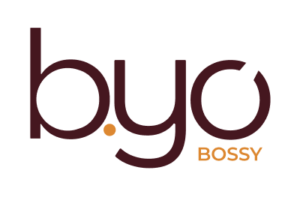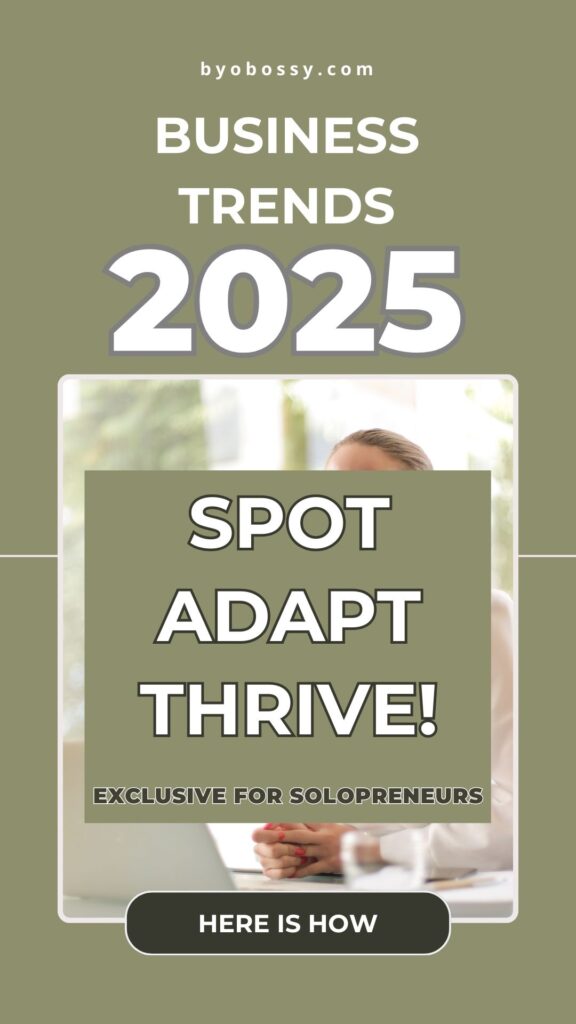Dreaming of launching a business in 2025 but worried about costs and whether you have the right skills? Here’s the good news: turning that dream into reality doesn’t have to break the bank. And as for the skills? I bet you already have plenty—let’s get you started with this list so you can become the savvy boss I know you can be!
The entrepreneurial landscape is evolving faster than ever, with doors wide open for creative, budget-friendly ventures. In fact, some of the most promising small business ideas for 2025 don’t require hefty investments—many can get off the ground with less than $100.
The demand for digital services, sustainable products, and personalized experiences is soaring, and 2025 is shaping up to be a goldmine of opportunities. E-commerce is set to keep booming, remote work is becoming the norm, and AI tools are popping up everywhere to make life easier. (And no, “AI” doesn’t have to feel like something out of a sci-fi movie—it’s simpler than you think!)
Here’s the kicker: the e-commerce sector alone is projected to hit an incredible $6.5 trillion by 2029 (Statista). That’s a whole lot of online shopping and a whole lot of potential for solopreneurs ready to jump in. The best part? You don’t need a fortune to get started. Sometimes, not even the full $100!
Starting small doesn’t mean thinking small.
This list of small business ideas for 2025 was created with both your budget and the latest market trends in mind. I’ve scoured research, analyzed emerging needs, and tapped into today’s biggest shifts. From online services like virtual assistance, which only needs a laptop and a spark of energy, to eco-conscious reselling ventures, you’re about to see just how many options you have.
With a bit of startup cash and a lot of passion, 2025 could be the year you break into entrepreneurship and build something meaningful—and profitable—on your own terms.
Each small business idea here is designed to be flexible and scalable, so you can start low-cost and grow in a way that suits you. Ready to find the perfect fit? Let’s dive in and make 2025 your year for growth, success, and—yes—a little fun along the way! Remember: you can smile all the way to success!
Bossy Tip: If you tend to procrastinate, check out this post on 7 Tips to Overcome Procrastination in the First 15 Minutes! This will definitely help you start moving towards success!
1. Freelance Writing
If you’ve got a knack for words and a little creativity, freelance writing could be your perfect small business idea for 2025. Businesses everywhere are on the lookout for writers who can bring their brand to life—whether that’s through blog posts, email newsletters, website copy, or even social media captions.
Why It Works in 2025
As more brands turn to authentic, relatable content, the demand for freelance writing continues to skyrocket. Think of it this way: every business with a digital presence needs words, and that’s where you come in! With remote work thriving and content reigning supreme, freelance writing offers flexibility, creativity, and a chance to work with clients you vibe with. You’re not just helping businesses grow; you’re also crafting stories that resonate—hello, dream job!
Startup Costs and Options
The great news? You don’t need a fortune to get started. With around $50, you can grab a domain name and set up a basic portfolio website if you want to stand out. Affordable and easy. But if a website feels like too much right now, no worries! Platforms like Writer Access and LinkedIn can be fantastic (and free) ways to showcase your skills, connect with clients, and build credibility. So, whether you’re ready to invest in a website or just want to keep things simple, you’ve got options.
The Copywriting Edge
Let’s talk copywriting—a high-demand niche within freelance writing focused on persuasive, action-driven content like product descriptions and sales pages, that doesn’t sound like AI-written content. With businesses looking to boost online sales, skilled copywriters are in high demand. If you enjoy weaving words that get results, exploring copywriting could set you apart from the crowd and even allow you to charge premium rates as you grow.
Potential Earnings
Freelance writers can start earning anywhere from $50 to $200 per project. Once you’ve built a reputation, you can confidently raise your rates. Many seasoned writers even transition to full-time, remote careers—working with clients they love and making an income on their terms.
Getting Started
Ready to jump in? Start by drafting a few sample pieces (think blog posts, product descriptions, or social media copy). Then, pitch your services to small businesses, bloggers, or nonprofits in need of fresh, engaging content. Freelance writing could be the ultimate gateway to entrepreneurship—low-cost, flexible, and your words are making an impact!
2. Social Media Management for Local Businesses
If you’re glued to social media and love creating content that stops the scroll, then social media management might be calling your name. As more local businesses hop onto social platforms to connect with customers, they’re seeking experts to help them build a digital presence that shines. That’s where you come in!
Why It Works in 2025
Social media isn’t just for big brands anymore. Local cafes, boutiques, and even yoga studios are jumping on platforms like Instagram, Facebook, and TikTok to grow their communities. With remote work here to stay, businesses are reaching out to customers online like never before.
And here’s the cherry on top: small businesses often look for social media managers who can create, post, and engage with followers on a budget, which means they’re looking for someone just like you—nimble, creative, and ready to make an impact!
Startup Costs and Tools
The great news? You can start with almost no upfront cost. Most of what you need to succeed is already available in free or low-cost tools, like Canva for design or Later for scheduling. If you want to add a professional touch, investing in a few affordable templates or apps (around $20–$50) can go a long way, but it’s totally optional. And once you have a few client examples under your belt, consider setting up a portfolio on Instagram or LinkedIn to showcase your work.
How to Stand Out
To make a splash as a social media manager, it’s essential to understand the latest trends and get a feel for what’s working on each platform. But here’s where you can really set yourself apart: by helping businesses find their unique voice and tone.
Many brands struggle to stand out in a crowded social landscape, so if you can guide them in crafting a style and personality that’s truly theirs—quirky, polished, down-to-earth, whatever suits them best—you’ll bring incredible value. And if you can specialize in a niche—like social media for eco-friendly brands or local restaurants—you can position yourself as the go-to person for businesses in that field.
Potential Earnings
Social media managers typically charge between $300 and $1,000 per month per client, depending on the scope of work. That means even one or two clients could give you a solid side income. And as you build experience, you can start charging higher rates or taking on more clients.
Getting Started
If social media management sounds like your vibe, start by creating a “social media starter kit” for potential clients—a sample of your work, content ideas, and engagement tips tailored to their brand. This can help them see the value you bring without you doing unpaid work.
Social media management is one of the most in-demand Small Business Ideas for 2025, and with your creativity, it could be a fun, profitable way to grow your skills and income!
3. Digital Art or Design Sales
Got an eye for design and a love for digital art? Selling digital art or design services could be one of the most exciting Small Business Ideas for 2025. With the world shifting toward digital products, there’s a huge demand for unique, downloadable artwork. From wall prints and digital stickers to social media templates, there’s endless space to create something that reflects your style—and attracts loyal fans along the way.
Why It Works in 2025
Consumers are on the hunt for creative, customizable digital products that add a personal touch to their homes, social media, or branding. And since digital items don’t require shipping or inventory, they’re easy to distribute and keep your overhead low.
In a world craving unique, personality-driven designs, this low-cost business idea is perfect for a creative solopreneur like you. Plus, you’re not just creating designs—you’re crafting pieces that brighten screens and spaces everywhere.
Startup Costs and Tools
The beauty of this business idea? You only need a computer, a design software subscription, and that spark of creativity. Tools like Adobe Illustrator, Canva, or Procreate (if you’re working on an iPad) let you create professional-quality products. Many designers start with Canva’s free version or low-cost upgrades, making it totally possible to launch a digital art business for under $100.
How to Stand Out
To make your mark, go for what’s trending, but also what feels authentic to you. After all, this will be your daily work, so make it something you enjoy. Whether you’re into minimalistic wall art, vibrant Instagram templates, or quirky digital planners, creating a cohesive, branded style will help you attract loyal fans who are excited to buy from you.
And setting up shop? Easy. You can create your own store on Shopify, or try platforms like Etsy or Creative Market, where you’ll reach customers already on the hunt for digital downloads—no website necessary.
Potential Earnings
Digital products are a great way to bring in steady income (yes, bills paid: ✅). Most sellers charge anywhere from $5 to $30 per item, and since they’re digital, there’s no limit on how many you can sell. Many successful sellers even make a full-time income by expanding their offerings and promoting them on social media.
Getting Started
Ready to jump in? Start by designing a few sample pieces to define your style, and upload them to a digital platform. This low-cost idea is the perfect entry into Small Business Ideas for 2025 if you’re a visual creator. With a little consistency and some creative marketing, your digital art could soon be brightening screens and decorating walls all over the world!
4. Virtual Assistant Services
In 2025, being a Virtual Assistant (VA) is like the ultimate multitool in the business world—versatile, indispensable, and always ready to save the day. If you’re the go-to person for organizing chaos and tackling tasks with flair, this could be your ticket to entrepreneurial stardom.
Why It Works in 2025
With businesses embracing the digital realm faster than you can say “Zoom meeting,” the demand for skilled VAs is skyrocketing. Companies are on the hunt for reliable sidekicks to handle everything from social media sorcery to customer support wizardry. And the best part? You can work in your PJs, collaborating with clients from around the globe. In 2025, VAs are the unsung heroes keeping the business world spinning smoothly.
Startup Costs and Tools
Getting started is a breeze. All you need is a trusty computer, a solid internet connection, and a few productivity tools like Google Workspace or project management software (think Trello or Asana). Many of these tools offer free versions, so you can launch your VA empire without breaking the bank. With initial expenses comfortably under $100, you’re all set to dive in.
How to Stand Out
To shine brighter than a supernova, consider specializing in a niche. Whether it’s supporting wellness coaches, e-commerce entrepreneurs, or real estate moguls, tailoring your services makes you the go-to guru in that field. Do you have tech skills? Offering website management or dabbling in graphic design can make you the superhero clients didn’t know they needed. And remember, stellar communication and a proactive attitude are your secret power.
Potential Earnings
VAs typically charge between $15 to $50 per hour, depending on experience and task complexity. With consistent gigs, many VAs build solid incomes and even go full-time. As your skills and reputation grow, so can your rates.
Getting Started
Ready to embark on your VA adventure? Craft a list of services you’re excited to offer and set up profiles on platforms like Upwork or Fiverr, where you control your terms and can build a client base over time. Additionally, consider joining professional networks or online communities where businesses actively seek VA support. Virtual Assistant Services are among the most dynamic small business ideas for 2025, offering flexibility, variety, and the chance to work with clients from diverse industries.
BTW: I wrote a post on: How to connect with potential clients in under 30 minutes. Check this post to get you started.
5. E-Book Creation and Sales
Do you have a story burning inside you or some go-to tips the world needs to hear? E-book creation could be your ticket to sharing that knowledge while earning some cash. With self-publishing tools galore and a growing love for digital reads, this small business idea for 2025 has all the makings of a hit—no printing press required!
Why It Works in 2025
We live in the age of digital wisdom, where people crave quick, practical knowledge they can consume on the go, but also love stories and a touch of mystery—who doesn’t? From guides on starting a side hustle to recipes for the perfect sourdough, e-books let you share what you know with a global audience. And since so many people read on their phones and tablets, the e-book market just keeps expanding. (Who needs a bookshelf, right? Although I’ll admit, I’m still hopelessly in love with mine…my beloved books).
Startup Costs and Tools
All you really need to get started is a computer and your brilliant ideas. Free tools like Google Docs or affordable programs like Canva can make your e-book look like a bestseller. Platforms like Amazon Kindle Direct Publishing (KDP) and Gumroad are perfect for distributing your book, letting you focus on writing while they handle the heavy lifting.
How to Stand Out
The secret? Be your fabulous you. Choose a topic that makes you excited to hit the keyboard—something you know well or can make genuinely useful. And, the more niche, the better! A unique topic can attract readers and cut down on competition. Don’t forget to add a catchy cover and a killer book description to seal the deal.
Potential Earnings
E-books typically sell for $2 to $10 each. But the magic lies in passive income. Once you set your system in motion, it’s like a mini money-making machine! With a smart marketing plan, that book can keep selling for months (or even years) with no extra effort. Some authors create bundles or series to boost sales—and we’re here for that savvy strategy!
Getting Started
Ready to go? Outline your e-book, hit up Canva for a pro-level cover, and start sharing your creation on social media. E-book creation is one of the most exciting Small Business Ideas for 2025—an opportunity to share your knowledge, help others, and yes, keep earning while you sleep. Or, if you’re the savvy boss I know you are, you’ll be busy crafting your next bestseller! Congrats, bossy writer! And hey, tell me about your book in the comments below—I’d love to hear all about it!
6. Tutoring or Online Courses
If you’re the friend everyone turns to for advice, or that one go-to person who can explain anything in five minutes, tutoring or creating online courses could be your jam. Sharing knowledge is powerful, and turning it into income? Even better! This small business idea for 2025 lets you teach what you know to eager learners from all over.
Why It Works in 2025
Remote learning isn’t going anywhere. Whether it’s tutoring school subjects, teaching a language, or helping someone master a hobby, people are jumping on board the virtual learning train. And here’s the best part—you don’t need to be a certified teacher to get started. Sometimes, a passion and a knack for teaching are all it takes. With more people turning to online learning, tutoring or online courses let you connect with students in your own style, at your own pace.
Startup Costs and Tools
To get rolling, you’ll need a computer, a good internet connection, and maybe some affordable tools like Zoom or Google Meet for live sessions. If you’re thinking about online courses, platforms like Teachable or Udemy can help you reach a wide audience without the hassle of building a website. Whether you want to teach live classes or create pre-recorded courses, you can dive in with minimal upfront investment.
How to Stand Out
What makes your tutoring or course unique? Maybe it’s your quirky teaching style, your energy, or a super-specific topic that no one else is covering. If you can find a niche—like “Spanish for Digital Nomads” or “The Art of Amigurumi”—you’ll have a better chance of attracting your ideal students. And let your personality shine! Teaching is about more than just the info; it’s about making it fun, relatable, and unforgettable for your students.
Potential Earnings
Tutors generally earn between $15 to $50 per hour, depending on their expertise and subject area. For online courses, though, the sky’s the limit! Courses that are well-marketed can earn hundreds to thousands of dollars a month in passive income, especially if you create a valuable series. Just remember, online courses take a bit more upfront work and planning than hourly tutoring—but the payoff can be worth it. The good news? You can learn these skills online too, mastering course creation as you go.
Getting Started
If this sounds like your calling, start by listing out your strengths and crafting a simple lesson plan. Try a few tutoring sessions with friends or family to refine your teaching style, then put yourself out there! For international tutoring, platforms like Preply and Wyzant offer global reach, letting you teach languages, coding, science, and more to students around the world. And for creating online courses, Teachable, Udemy, or Skillshare can help you go big. Tutoring or Online Courses offer one of the most accessible Small Business Ideas for 2025—an amazing way to help others grow while building a flexible, fulfilling business for yourself.
7. Personalized Gift Creation and Sales
If you’re the type who loves crafting or just has a flair for creating one-of-a-kind items, personalized gift creation might be the perfect small business idea for 2025. From custom mugs and T-shirts to unique digital designs (hello, scented kits, and custom candles!), the demand for personalized, thoughtful gifts is booming. Everyone wants something that feels made just for them, and you could be the creative genius behind it all.
Why It Works in 2025
In a world where everyone’s looking for a personal touch, customized gifts are more popular than ever. People love unique, meaningful items that stand out, whether it’s a special keepsake for a friend or a little something that makes their own space feel more “them.” And since personalized gifts are all about creativity, this business is ideal if you want to put your artistic skills to good use and let your creativity shine!
Startup Costs and Tools
Good news for your budget: personalized gift creation doesn’t need a massive investment. For physical products, you might need some basic materials—think blank mugs, T-shirts, or frames, plus any tools for personalization, like vinyl cutters or paint pens. If you’re leaning into digital products, design tools like Canva or Adobe Spark make it easy to create personalized art, prints, or digital downloads at nearly no cost at all. And platforms like Etsy or Shopify let you set up shop and start reaching customers with ease.
How to Stand Out
Your style is your secret sauce! Pick a theme or aesthetic that feels you, and use it to attract your ideal customers. Whether it’s cute and quirky, minimalist and modern, or something totally unique, a clear vibe helps people remember and come back to you. And go the extra mile with options like color choices or personalized messages—these little touches can make a big impact. And don’t forget to share your creations on social media; photos or videos of your process can be super engaging!
Potential Earnings
Most personalized items can sell anywhere from $10 to $50, depending on the complexity and materials. Imagine selling just 10 items a week at $20 each—that’s an extra $200 per week, or around $800 a month! And if you expand into seasonal or trending items, you can capture new customers year-round. With some smart marketing, those earnings can grow fast!
Getting Started
Ready to get creative? Start by experimenting with a few designs and test them with friends or family to get feedback. Set up an Etsy shop or your own website on Shopify, and start sharing your work on social media to spread the word. Personalized gifts are one of the most fun Small Business Ideas for 2025—a way to share your creativity, connect with customers, and bring a little extra joy into people’s lives!
So, what’s your creative mind telling you to make? I’d love to hear about it—share your ideas in the comments below!
Wrapping It Up: Your First Steps to Financial Freedom in 2025!
So, we’ve walked through seven exciting small business ideas for 2025 that you can start on a budget. Each one is designed to help you take control of your time, tap into your unique talents, and bring your entrepreneurial dreams to life. The journey toward financial freedom begins with just one step—are you ready to take it?
Which idea are you going to try?
Share it in the comments below! I’d love to hear what’s inspiring you and your big plans for the year ahead. And if you know someone who’s also looking to start fresh in 2025, why not share this post with them? Let’s spread the inspiration and help as many people as possible take charge of their future.
🧡And here’s something extra fun—I want to go deeper on one of these ideas, but I need your help to decide which one! Vote below to let me know which topic you’d love a dedicated deep-dive article on. Voting ends on March 1st, and the winning article will be live on March 15! If you’d like a reminder when it’s up, drop your email, and I’ll make sure you’re the first to know.
Hey Bossy! Today, You Are The Boss
Which small business idea should have its own deep dive Blog Post?

Now, don’t forget to check out Great Potential Business Ideas for 2025 – Part 2, where we’ll cover even more high-potential ideas to fuel your entrepreneurial journey. Your future in 2025 is looking bright, filled with potential, and waiting for you to jump in. Ready to make this year the one where you go after your goals, your freedom, and the business you’ve been dreaming of?

And remember—you’re not alone on this journey! We’re in this together, and I’m here to help. If you need support or just want to share your progress, drop me an email anytime. I’ll do my best to get back to you as soon as I can. Let’s make 2025 your year, bossy!
Thanks for sharing this beautiful business journey with me.🧡
Fabi Terra

About The Author
Fabiana Terra is the creative mind behind BYO Bossy and a passionate business administrator with a postgraduate degree in marketing and communications. With over 2 decades of experience, she loves helping solopreneurs and small business owners turn their dreams into thriving realities that fit their unique visions and goals. Fabi makes the journey to success easier and more fun by providing practical tools and down-to-earth advice, so anyone can dive into entrepreneurship, even if they’re just starting out!
She says we can smile all the way to success!



